Women in Bioorganic Chemistry
Funding
Acknowledgments
Conflicts of Interest
References
- Matassini, C.; Parmeggiani, C.; Cardona, F. New Frontiers on Human Safe Insecticides and Fungicides: An Opinion on Trehalase Inhibitors. Molecules 2020, 25, 3013. [Google Scholar] [CrossRef] [PubMed]
- Dell’Oste, V.; Spyrakis, F.; Prandi, C. Strigolactones, from Plants to Human Health: Achievements and Challenges. Molecules 2021, 26, 4579. [Google Scholar] [CrossRef]
- Chen, S.; Lin, B.; Gu, J.; Yong, T.; Gao, X.; Xie, Y.; Xiao, C.; Zan, J.Y.; Wu, Q. Binding Interaction of Betulinic Acid to α-Glucosidase and Its Alleviation on Postprandial Hyperglycemia. Molecules 2022, 27, 2517. [Google Scholar] [CrossRef] [PubMed]
- Silvestro, S.; Schepici, G.; Bramanti, P.; Mazzon, E. Molecular Targets of Cannabidiol in Experimental Models of Neurological Disease. Molecules 2020, 25, 5186. [Google Scholar] [CrossRef] [PubMed]
- Nesterkina, M.; Smola, S.; Rusakova, N.; Kravchenko, I. Terpenoid Hydrazones as Biomembrane Penetration Enhancers: FT-IR Spectroscopy and Fluorescence Probe Studies. Molecules 2022, 27, 206. [Google Scholar] [CrossRef] [PubMed]
- Vorontsova, S.K.; Yadykov, A.V.; Scherbakov, A.M.; Minyaev, M.E.; Zavarzin, I.V.; Mikhaevich, E.I.; Volkova, Y.A.; Shirinian, V.Z. Novel d-Annulated Pentacyclic Steroids: Regioselective Synthesis and Biological Evaluation in Breast Cancer Cells. Molecules 2020, 25, 3499. [Google Scholar] [CrossRef] [PubMed]
- Kukushkin, M.; Novotortsev, V.; Filatov, V.; Ivanenkov, Y.; Skvortsov, D.; Veselov, M.; Shafikov, R.; Moiseeva, A.; Zyk, N.; Majouga, A.; et al. Synthesis and Biological Evaluation of S-, O- and Se-Containing Dispirooxindoles. Molecules 2021, 26, 7645. [Google Scholar] [CrossRef] [PubMed]
- Campkin, D.M.; Shimadate, Y.; Bartholomew, B.; Bernhardt, P.V.; Nash, R.J.; Sakoff, J.A.; Kato, A.; Simone, M.I. Borylated 2,3,4,5-Tetrachlorophthalimide and Their 2,3,4,5-Tetrachlorobenzamide Analogues: Synthesis, Their Glycosidase Inhibition and Anticancer Properties in View to Boron Neutron Capture Therapy. Molecules 2022, 27, 3447. [Google Scholar] [CrossRef] [PubMed]
- Coppa, C.; Sorrentino, L.; Civera, M.; Minneci, M.; Vasile, F.; Sattin, S. New Chemotypes for the Inhibition of (p)ppGpp Synthesis in the Quest for New Antimicrobial Compounds. Molecules 2022, 27, 3097. [Google Scholar] [CrossRef] [PubMed]
- Dreneau, A.; Krebs, F.S.; Munier, M.; Ngov, C.; Tritsch, D.; Lièvremont, D.; Rohmer, M.; Grosdemange-Billiard, C. α, α-Difluorophosphonohydroxamic Acid Derivatives among the Best Antibacterial Fosmidomycin Analogues. Molecules 2021, 26, 5111. [Google Scholar] [CrossRef] [PubMed]
- Chen, X.; Liu, Y.-C.; Cui, J.-J.; Wu, F.-Y.; Xiao, Q. A Galactosidase-Activatable Fluorescent Probe for Detection of Bacteria Based on BODIPY. Molecules 2021, 26, 6072. [Google Scholar] [CrossRef] [PubMed]
- Dissanayake, S.S.M.; Ekambaram, M.; Li, C.K.; Harris, P.W.R.; Brimble, M.A. Identification of Key Functional Motifs of Native Amelogenin Protein for Dental Enamel Remineralisation. Molecules 2020, 25, 4214. [Google Scholar] [CrossRef] [PubMed]
- Sartori, A.; Bugatti, K.; Portioli, E.; Baiula, M.; Casamassima, I.; Bruno, A.; Bianchini, F.; Curti, C.; Zanardi, F.; Battistini, L. New 4-Aminoproline-Based SmallMolecule Cyclopeptidomimetics as Potential Modulators of α4ß1 Integrin. Molecules 2021, 26, 6066. [Google Scholar] [CrossRef] [PubMed]
- Vanni, C.; Bodlenner, A.; Marradi, M.; Schneider, J.P.; de los Angeles Ramirez, M.; Moya, S.; Goti, A.; Cardona, F.; Compain, P.; Matassini, C. Hybrid Multivalent Jack Bean α-Mannosidase Inhibitors: The First Example of Gold Nanoparticles Decorated with Deoxynojirimycin Inhitopes. Molecules 2021, 26, 5864. [Google Scholar] [CrossRef] [PubMed]
- Lupi, M.; Onori, M.; Menichetti, S.; Abbate, S.; Longhi, G.; Viglianisi, C. Resolution of a Configurationally Stable Hetero[4]helicene. Molecules 2022, 27, 1160. [Google Scholar] [CrossRef] [PubMed]
Short Biography of Authors Who Contributed to the Special Issue
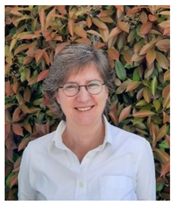 | Lucia Battistini (Department of Food and Drug, University of Parma, Parco Area delle Scienze 27/A, 43124 Parma, Italy). Research interests: The main focus is on the development of new classes of peptidomimetic ligands for molecular recognition and their use for biomedical applications. Molecules 2021, 26, 6066; doi.org/10.3390/molecules26196066. What is the most important challenge for a woman working in the field of bioorganic chemistry? One of the most challenging issues for a bioorganic chemist (not just for a female scientist) working in a field that lies at the interface between different disciplines (chemistry, biology, medicine, etc.) is to create the best empathic and collaborative atmosphere in the working group, and fully recognize and value the originality and creativity within each contribution. I believe that women leading research groups owing to their empathy and sensitivity have a step ahead to contrast stereotypes, unconscious biases, and prejudices that sometimes spoil the teamwork. |
 | Elena Beloglazkina (Department of Chemistry, Lomonosov Moscow State University, Leninskie gory 1-3, 119991 Moscow, Russia). Research interests: organic synthesis, biologically active organic compounds, organo-chalcogen compounds, metal complexes with organic ligands. Molecules 2021, 26, 7645; doi.org/10.3390/molecules26247645. What are your suggestions for a young woman keen to become a successful scientist (in the field of bioorganic chemistry? Do not be afraid to take on something completely new for your and do not give up in case of possible failures. Patience and interest in what you are doing sooner or later will yield results. It will not always be the same as you expected when starting your research, but that’s the charm of our work. |
 | Anne Bodlenner (Laboratoire d’Innovation Moléculaire et Applications UMR CNRS 7042-LIMA|ECPM), University of Strasbourg, 25 Rue Becquerel, 67087 Strasbourg, France). Research interests: bioorganic chemistry, interactions between small molecules and enzymes, multivalency, carbohydrates and glycomimetics. Molecules 2021, 26, 5864; doi.org/10.3390/molecules26195864. What is the most important challenge for a woman working in the field of bioorganic chemistry? As a woman researcher in chemistry, an important challenge was to find my own balance between research, teachings and personal life, as I wish to spend as much quality time with my son as possible. What is the secret of being a successful female bioorganic chemist? I found that being well-organized, defining clear objectives at work, and being in harmony with my priorities works well for me. My tasks being essentially intellectual, sport and nature also help me to find my physical and intellectual balance, which is necessary to raise enough energy to tackle all challenges. I am also very lucky to have a supportive partner who is actively involved in the daily running of things. |
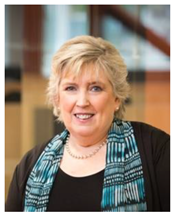 | Margaret Brimble (School of Chemical Sciences, The University of Auckland, New Zealand). Research interests: Synthesis of bioactive natural products, antimicrobial peptides, antiviral peptides, lipopeptides and glycopeptides. Peptide based vaccines and adjuvants. Molecules 2020, 25, 4214; doi.org/10.3390/molecules25184214. What are your suggestions for a young woman keen to become a successful scientist (in the field of bioorganic chemistry)? I didn’t realize that to be a scientist you have to be able to multi-task exceptionally well. There are so many things that need to be written—grants, reports, papers, patents, marketing material, references, reviews, outreach material, teaching material etc. These tasks are endless and I wish I could write quicker. I did organic chemistry since I liked doing things in the lab and not writing! The best thing to succeed is to remember you can’t do it alone and you are only as successful as the people who work alongside you in your team. Take each day in your stride and seek out like-minded people as your team members and collaborators. Remember you only learn from setbacks and making mistakes and rise above the intimidating bravado that many of your colleagues are good at displaying. A lot of it is hype! Doing good science always takes time and a lot of hard work. |
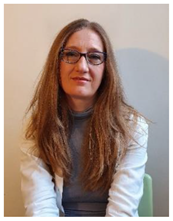 | Francesca Cardona (Dipartimento di Chimica “Ugo Schiff” (DICUS), Università degli Studi di Firenze, Via della Lastruccia 3-13, 50019 Sesto Fiorentino, Italy). Research interests: Stereoselective syntheses of iminosugars as glycosidase inhibitors and/or pharmacological chaperones for lysosomal enzymes, green chemistry. Molecules 2020, 25, 3013; doi.org/10.3390/molecules25133013. What are your suggestions for a young woman keen to become a successful scientist (in the field of bioorganic chemistry)? The greatest challenge I had to face up during my career has been how to conciliate my passion in bioorganic chemistry with my private life. I love being a scientist and I also love being a mother. The secret? Not being too individualist! In my personal experience, the secret for being a quite good scientist and a quite good mother (as I hope to be) has been to create a good team, instead of just running alone. |
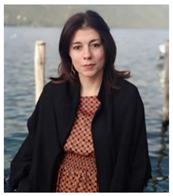 | Valentina Dell’Oste (Dipartimento di Scienze della Sanità Pubblica e Pediatriche), Università degli Studi di Torino, Via Santena 9, 10126 Torino, Italy). Research interests: Virus-host interactions, screening and characterization of new antiviral molecules, antiviral immunity. Molecules 2021, 26, 4579; doi.org/10.3390/molecules26154579. What are your suggestions for a young woman keen to become a successful scientist (in the field of bioorganic chemistry)? I strongly believe that to become a successful scientist, but more generally, to reach your professional goals, you need to apply three critical rules: perseverance in work and study, to be multitasking, and favor teamwork. Remember always that your colleagues and your family are your best allies! Then, try to be always open to new experiences, since just in this way you can improve your knowledge and transfer it to the work. |
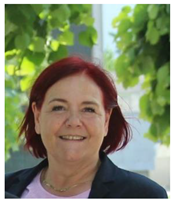 | CatherineGrosdemange-Billiard (Chemistry), Université de Strasbourg/Institut de Chimie, 4, rue Blaise Pascal,67081 Strasbourg, France. Research interests: Development of novel and unexplored types of antibacterial drugs by synthesizing MEP pathway protein inhibitors as well as small molecules involved in the intra- and inter-species mechanisms of bacterial communication. Molecules 2021, 26, 5111; doi.org/10.3390/molecules26165111. What are your suggestions for a young woman keen to become a successful scientist (in the field of bioorganic chemistry? Trust yourself and your passion for biomolecules and organic chemistry. Never give up but persevere the work you believe in and face obstacles with the right tools and by joining forces with scientist of other disciplines. Turn negative experiences into positives one. Share your knowledge and pass on your passion to the young scientists for keeping you inspired. |
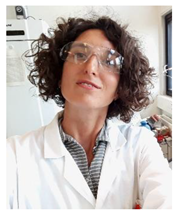 | Camilla Matassini (Department of Chemistry “Ugo Schiff”, DICUS), University of Florence, Via della Lastruccia 3-13, 50019, Sesto Fiorentino, Firenze (Italy). Research interests: nitrogen-containing glycomimetics; new oxidation methods, multivalency; gold glyconanoparticles; glycosidase inhibitors; lysosomal enzymes; pharmacological chaperones; Gaucher–Parkinson relationship. Molecules 2021, 26, 5864; doi.org/10.3390/molecules26195864. As a women chemist, which obstacles did you encountered in your career, and how did you face them? In my experience, most of friends and relatives knew very little (and were even wary), about an academic career, especially a scientific one. When I had my PhD fellowship my mother told me that I had been very good convincing people to pay me for studying…However, I think that my passion for the laboratory life, my enthusiasm for chemistry and my curiosity for its application to biomedical issues, eventually convinced them that being a scientist was a real job! An added value? Being surrounded by inspiring and motivating mentors and colleagues. |
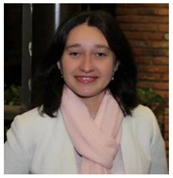 | MariiaNesterkina (Drug Design and Optimisation, Helmholtz Institute for Pharmaceutical Research Saarland, Campus E8.1, 66123 Saarbrücken, Germany). Research interests: Chemistry of natural compounds, investigation of penetration enhancers, pharmacology. Molecules 2022, 27, 206; doi.org/10.3390/molecules27010206. What is the secret of being a successful female bioorganic chemist? As usually in science, success consists of 99% hard work and 1% luck. Bioorganic chemistry is no exception in this regard—you can spend several months in the laboratory synthesizing novel compounds that in the end were revealed as biologically inactive. Then a new path begins, new ideas and hypotheses are put forward needed to be experimentally confirmed. However, we understand the ultimate goal of our scientific research and its significance both for fundamental and applied investigations. Enthusiasm and inspiration for new discoveries and their potential importance to human society are the main incentives for success in bioorganic chemistry. |
 | CristinaPrandi (Department of Chemistry), University of Turin, via P. Giuria 7, 10125 Torino). Research interests: organic synthesis in non-conventional media, organometallic chemistry, synthesis of natural compounds. Molecules 2021, 26, 4579; doi.org/10.3390/molecules26154579. Have you ever felt disadvantaged in being a woman in your research field? I have always felt that I would have to work much harder than my male colleagues to get the same recognition from the academic and scientific community, especially after the birth of my daughters. But, in the end, this turned out to be an advantage. I learned the value of time, to be more efficient and to combine family life with my role as a scientist. |
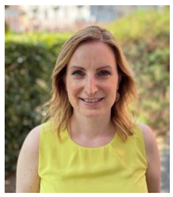 | Sara Sattin (Dipartimento di Chimica), Università degli Studi di Milano, via C. Golgi, 19, 20133 Milano, Italy). Research interests: design and synthesis of small molecules tailored to interact with specific protein targets (host and pathogen receptors and enzymes mediating pathogen adhesion, virulence and bacterial persistence). Molecules 2022, 27, 3097; doi.org/10.3390/molecules27103097. What is the most important challenge for a woman working in the field of bioorganic chemistry? I think the most important challenge I faced has been networking with peers and senior academic members of both organic chemistry and neighbouring fields. For instance, when I was already assistant or associate professor I often found myself in situations (e.g., conferences) where colleagues just assumed I was a student or a postdoc at most, rarely including me in relevant scientific or decision-making conversations. Women scientists should be more proactive in creating collaborative networks and advocating for female colleagues at all career levels. |
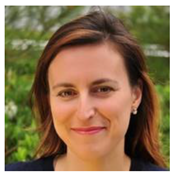 | Michela Simone Newcastle, CSIRO Energy Centre, CSIRO, 10 Murray Dwyer Court, Mayfield West, NSW2304, Australia. Previously in: Discipline of Chemistry, University of Newcastle, Callaghan, NSW 2308, Australia and Priority Research Centre for Drug Development, University of Newcastle, Callaghan, NSW 2308, Australia. Research interests: carbohydrate chemistry, synthetic organic chemistry, medicinal and bioorganic chemistry, nuclear magnetic resonance, carbohydrate active enzymes, heterocyclic chemistry, renewable energy technologies. Molecules 2022, 27, 3447; doi.org/10.3390/molecules27113447. What is the secret of being a successful female bioorganic chemist? I want to acknowledge the huge role my mother and my grandmother played in introducing me to scientific thinking and natural phenomena since I was a child. They also encouraged me to pursue excellence in everything I do. I owe them so much of what I have achieved, both in my private and public life. I found that the most important factors to being successful are a constant, ethical and honest approach to pursuing excellence, hard work, steadfast optimism, patience, good mentoring and cultivating fruitful relationships with a plethora of colleagues. Seek advice relentlessly, listen to all advice, read up as much as you can, but - at the end of the day - do your own thing, follow your instincts, be mightily proactive and do so fearlessly. It’s difficult, but it’s the only way forward. The other crucial message is: you don’t have to choose between having a career and having a family. You can have both, if you want. There are no right or wrong times. It all comes down to how you manage what happens. Embrace anything that happens, be proactive, find ways of managing tough situations. Define your own success. Don’t be afraid to restart from scratch (I have done so several times). Focus on the most important aspect of life: human relationships (especially with the children in your care). |
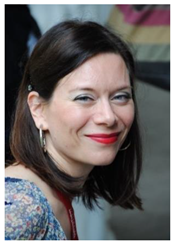 | Francesca Spyrakis (Department of Drug Science and Technology), University of Turin, Via Giuria 9, 10125, Turin, Italy. Research interests: Drug Design. Molecules 2021, 26, 4579; doi.org/10.3390/molecules26154579. What is the most important challenge for a woman working in the field of bioorganic chemistry? According to my opinion and personal experience, the most important challenge I found, and I still find, has been combining the professional life and commitments with the family ones. In other words, finding the right time to spend with my daughter and my partner. In the years I have learned to optimize time and to handle only fundamental commitments, while delegating the other ones. Also, I have found very smart collaborators, who help me in handling the research and teaching activities. Time is always short, when you are enjoying, but now I can get the best of it! What are your suggestions for a young woman keen to become a successful scientist (in the field of bioorganic chemistry? To young women willing to become scientists I would recommend to never give up! Even when things seem to be going wrong, there is always an opportunity around the corner. The important is to be ready to catch any occasion and not be scared to get in the game! |
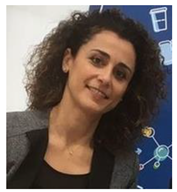 | Caterina Viglianisi (Dipartimento di Chimica “Ugo Schiff” (DICUS), Università degli Studi di Firenze, Via della Lastruccia 3-13, 50019 Sesto Fiorentino, Italy). Research interests include redox chemistry with design and synthesis molecular, macromolecular and nano-supported antioxidants and the study of their potential applications in the medical field and new materials. A further research area is the synthesis and evaluation of the optoelectronic properties of condensed heterocyclic systems. Molecules 2022, 27, 1160; doi.org/10.3390/molecules27041160. What is the secret of being a successful female bioorganic chemist? What are your suggestions for a young woman keen to become a successful scientist (in the field of bioorganic chemistry? A young chemist must always remember that becoming a successful scientist requires countless hours of work, although we are in the exciting world of discovery, so work hard and enjoy your job! |
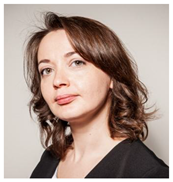 | YuliaVolkova (Laboratory of Steroid Compounds, N. D. Zelinsky Institute of Organic Chemistry, Russian Academy of Sciences, 47 Leninsky prosp., 119991 Moscow, Russia). Research interests: Design and synthesis of novel heterosteroids promising as anticancer agents against hormone-dependent cancers such as breast and prostate cancer. Molecules 2020, 25, 3499; doi.org/10.3390/molecules25153499. What is the most important challenge for a woman working in the field of bioorganic chemistry? Women were legally allowed to pursue careers in science just over 100 years ago. Having received new opportunities, women retained the old responsibilities. Today the main challenge women scientists’ face is to find a work-life balance. The social burden of raising children and running a household in many countries is still regarded as predominantly female. Many women scientists are forced to take a break from their work or significantly reduce their work hours due to the above responsibilities. On this account, women in science are flexible, highly efficient, multitasking, and the able to quickly rearrange themselves. |
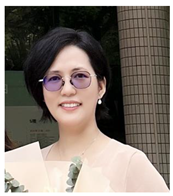 | Janis Ya-xian Zhan (School of Pharmaceutical Science, Guangzhou University of Chinese Medicine, Guangzhou University Town Waihuan East Road No. 232, 510006 Guangzhou, China). Research interests: Traditional Chinese medicine pharmacology, traditional Chinese medicine molecules, oxidative stress, immune inflammation, aging, environmental chemistry, pharmacokinetics. Molecules 2022, 27, 2517; doi.org/10.3390/molecules27082517. Have you ever felt disadvantaged in being a woman in your research field? As a female scientist, I am full of enthusiasm and interest in my research field. In the course of my research, I encountered many difficulties and setbacks. But fortunately, I have not been treated unfairly since I am a woman. Many colleagues and friends around have given selfless help and care. This makes me stick to my own research path and make continuous progress. |
Publisher’s Note: MDPI stays neutral with regard to jurisdictional claims in published maps and institutional affiliations. |
© 2022 by the authors. Licensee MDPI, Basel, Switzerland. This article is an open access article distributed under the terms and conditions of the Creative Commons Attribution (CC BY) license (https://creativecommons.org/licenses/by/4.0/).
Share and Cite
Cardona, F.; Parmeggiani, C.; Matassini, C. Women in Bioorganic Chemistry. Molecules 2022, 27, 4290. https://doi.org/10.3390/molecules27134290
Cardona F, Parmeggiani C, Matassini C. Women in Bioorganic Chemistry. Molecules. 2022; 27(13):4290. https://doi.org/10.3390/molecules27134290
Chicago/Turabian StyleCardona, Francesca, Camilla Parmeggiani, and Camilla Matassini. 2022. "Women in Bioorganic Chemistry" Molecules 27, no. 13: 4290. https://doi.org/10.3390/molecules27134290
APA StyleCardona, F., Parmeggiani, C., & Matassini, C. (2022). Women in Bioorganic Chemistry. Molecules, 27(13), 4290. https://doi.org/10.3390/molecules27134290






